In the truest heart of Tuscany, where the hills seem hand-drawn and the rows of vines trace the landscape like musical scores, lies Radda in Chianti, embraced by vineyards and guarded by ancient walls, perched on the ridge between the Arbia and Pesa rivers.
Known as the "village of vineyards" by those who truly know it, Radda is a medieval jewel, shaped by narrow alleys, stone arches and towers. But what strikes the eye even before its intact architecture is the dense weave of vineyards stretching as far as the horizon around the village.
Inhabited since the 9th century and first mentioned in 1002, it has played a central role in the history of Chianti, so much so that it served as its historical capital for centuries, alongside its "sister" towns, Castellina and Gaiole.
Yet what makes Radda in Chianti truly special goes beyond dates and records. It’s that atmosphere you feel the moment you step inside its walls: a sense of precious slowness, of unhurried daily life, where landscape, culture and taste blend into a living experience.
Visiting Radda (more than just a stop on a wine and food tour) means entering a dimension where everything feels real, still alive. And perhaps for that very reason, it remains blissfully uncrowded.

An ancient soul between Etruscan walls and medieval towers
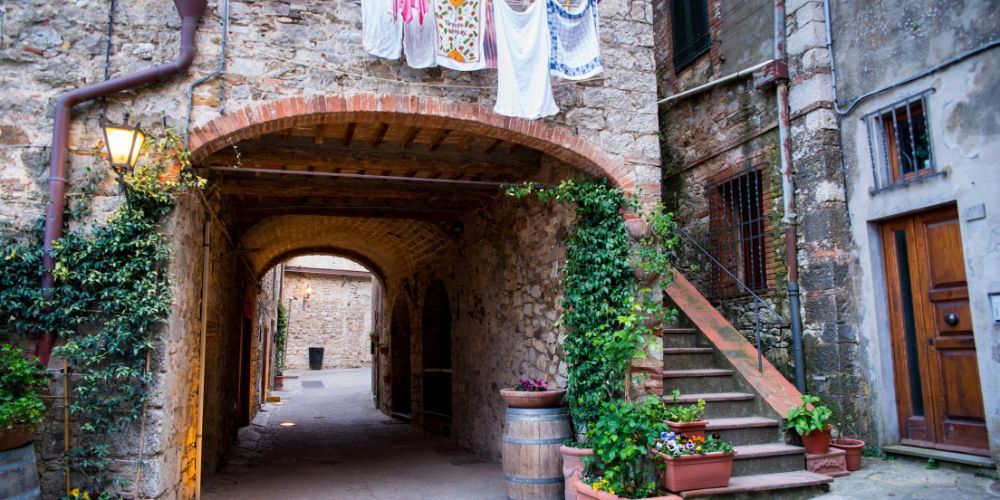
Walking through the streets of Radda in Chianti today, it’s hard to imagine just how ancient its history is. Long before the village took on its medieval identity, these hills were home to the mysterious Etruscan people, whose presence still lingers in subtle yet meaningful traces scattered across the countryside and rural hamlets.
The first documented signs date back to the 8th century BC, but the Castle of Radda appears in records from the 11th century. Around 1220, it passed into the hands of the powerful Guidi counts. The true turning point came with the centuries-long rivalry between Florence and Siena: Radda eventually fell under Florentine rule and, by the late 1200s, was granted its own Podestà. In 1384, it was named capital of the Chianti League, alongside Castellina and Gaiole.
Peace brought transformation to the land. Sharecropping shaped the countryside into what we now recognize as the classic Chianti landscape: vineyards, olive groves, isolated farmsteads, and gently winding dirt roads.
The historic center has preserved its original elliptical layout, still enclosed by ancient walls. Notable landmarks include the Palazzo del Podestà, with its elegant façade adorned with coats of arms, and the Church of San Niccolò overlooking a quiet little square.
In the surrounding area, history, art, and spirituality blend harmoniously: from the Franciscan convent of Santa Maria in Prato, which houses a museum of sacred art, to the enchanting hamlet of Volpaia, with its castle on the border between two worlds (Florence and Siena) and the unique Church of the Commenda, dedicated to Saint Euphrosynus, the Eastern bishop said to have evangelized the Chianti region.
The flavors of Radda in Chianti: where time is measured in glasses and aromas
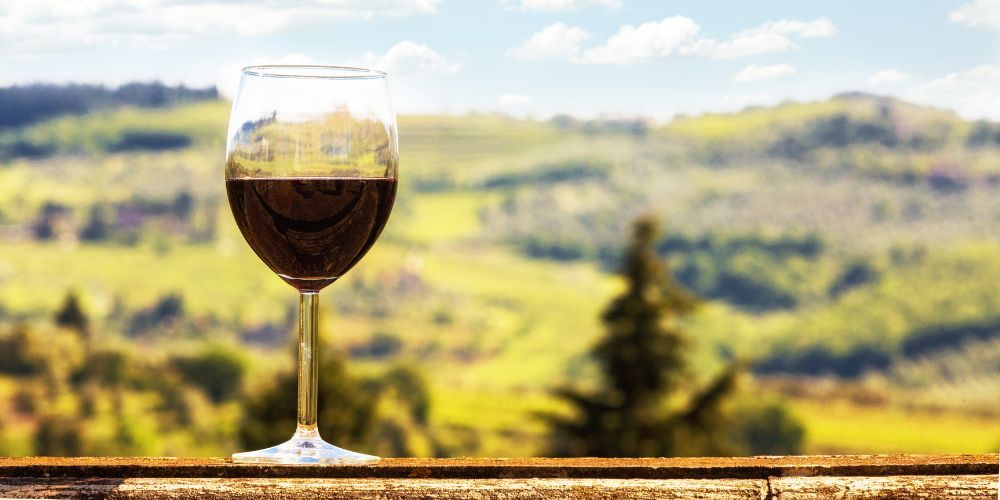
Radda in Chianti is the kind of place where life is meant to be savored slowly. Days begin with a walk among the vines and end with a glass of red wine under the golden light of the setting sun. Food here is not just sustenance, it’s ritual, it’s storytelling.
It’s the Chianti Classico, with its black rooster seal, that tells the story of this land better than any words. Born from sangiovese grapes and refined through rigorous traditions, it’s a wine both austere and generous.
But Radda’s culinary identity doesn’t stop at wine. Quite the contrary. The table here bursts with ancient, authentic flavors, rooted deeply in peasant traditions.
Among them stands a proud icon: Cinta Senese. This native pig breed, raised free-range, yields rich, marbled meat that is transformed into delicacies like salami, finocchiona, capocollo, prosciutto, each slice telling a story of seasons, pastures, and practiced hands.
Then there’s the Tonno del Chianti (Chianti’s "tuna"), a dish surprising even in name. It’s not fish, but pork, slowly cooked in extra virgin olive oil and herbs until it’s tender and aromatic.
Born of necessity, from the ingenuity of a cuisine that turned preservation into art, it’s served with cannellini beans and fresh onion or on slices of toasted bread: one taste, and you’re transported to a summer lunch under a pergola a hundred years ago.
And of course, there’s the “ciccia”, as they call it here. Whether it’s Chianina or other locally raised breeds, this is beef at its finest, grilled, rare, seasoned only with coarse salt and good oil. Nothing more is needed when the raw material is this pure.
Wineries to explore: where the heart of Chianti is born
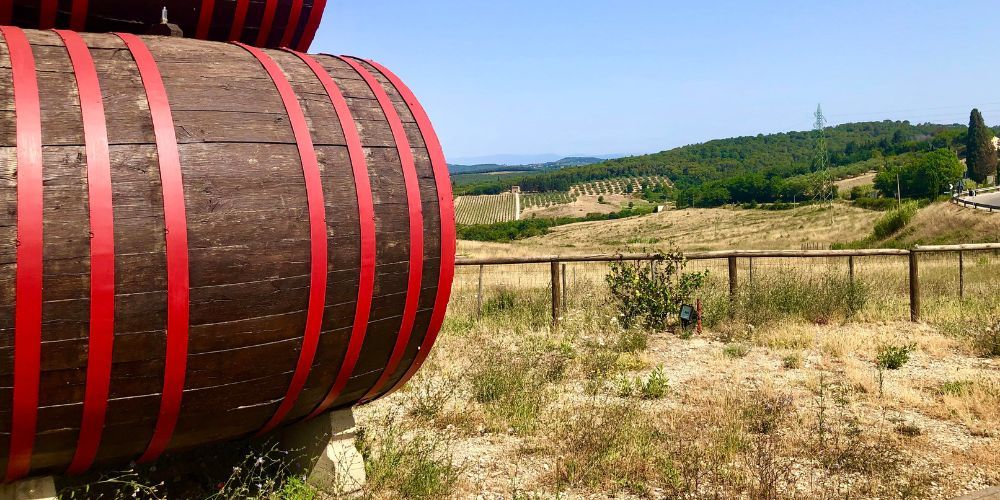
Visiting Radda in Chianti without letting yourself be guided by the scent of wine would be like reading only the title of a novel and then closing it. Here, among vineyards that change with the seasons, sun-kissed grape clusters, and quiet cellars nestled in the hills, Chianti Classico becomes an experience to be savored with all the senses.
Just beyond the village walls, the landscape unfolds into gentle slopes dotted with estates surrounded by greenery, places where winemaking is still part of daily life. Some properties tell ancient stories through well-tended rows of vines and oak barrels kept in centuries-old cellars, where each bottle reflects tradition, patience, and deep-rooted knowledge.
Climbing higher into the hills, you'll find elegant rural homes embraced by vineyards, offering sweeping views over valleys and distant ridgelines: time seems to slow down here, measured in harvests and quiet, thoughtful gestures.
Some historic estates are home to vines that have stood for over fifty years, and cellars carved into the rock that preserve not only wine but memories. Elsewhere, just steps from the village center, vineyards blend with olive groves and woodland, creating a balanced landscape that speaks to the soul of Chianti.
In more contemporary settings, craftsmanship meets elegance: wine is produced with a tailor-made approach, shaped by the richness of the soil, the altitude, and the gentle breath of the earth.
Whatever path you choose, let the scents, stories, and scenery guide you — it’s the most authentic way to discover the true soul of Radda.
Paths through vines and silence: discovering Radda in Chianti on foot
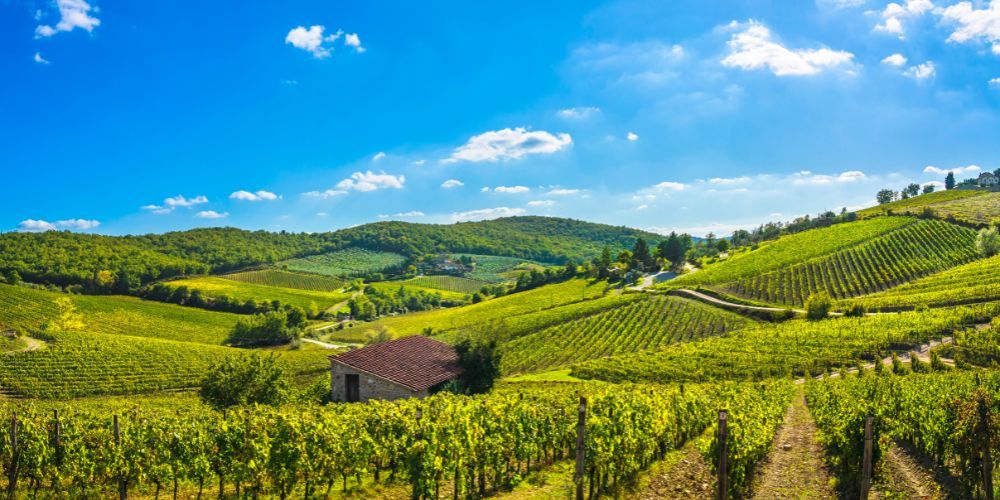
Those who choose to explore Radda in Chianti on foot do so for a deeper reason, because the landscape here isn’t just something to admire, it’s something to live.
One of the most scenic routes is the loop trail connecting Radda, Castelvecchi, and Volpaia.
It’s a path that reveals the very soul of Chianti: starting from the heart of the village, it winds through orderly hills, endless vineyards, and stone hamlets that rise like mirages.
The walk opens up to ever-changing vistas, a sun-kissed sea of vines, a wooded patch fragrant with earth and silence, a village like Volpaia that suddenly appears, its proud towers and cliffside houses defying gravity.
More intimate and meditative is the path from Radda in Chianti to Valimaggio, leading to the Church of San Giusto in Salcio. The trail passes through shaded valleys, dotted with cypress and oak, and arrives at this isolated place of worship that overlooks the valley like a natural pulpit.
Among the most accessible and scenic hikes is the short walk to Castelvecchi, a route that may be brief but rewards with a breathtaking viewpoint: from there, Radda in Chianti looks like a castle floating in a sea of green.
For those seeking a wilder and more intense experience, the trail to Badiaccia Montemuro, a hamlet clinging to the slopes of Monte San Michele, is a must. Here, Tuscany becomes more rugged, more vertical, and the panorama opens into a sweeping view that stretches to the horizon.
And for those who prefer a gentler but no less enchanting walk, there’s the Passeggiata La Villa, a path that winds through neat vineyards, solitary cypresses, and historic villas that dot the landscape like precious gems.
It’s the ideal route for those who want to admire the village from afar, watch it emerge from the folds of the hills, and then return to its stone embrace, one step at a time.
Where to sleep (and eat) in Radda in Chianti: hospitality with heart, flavors to remember
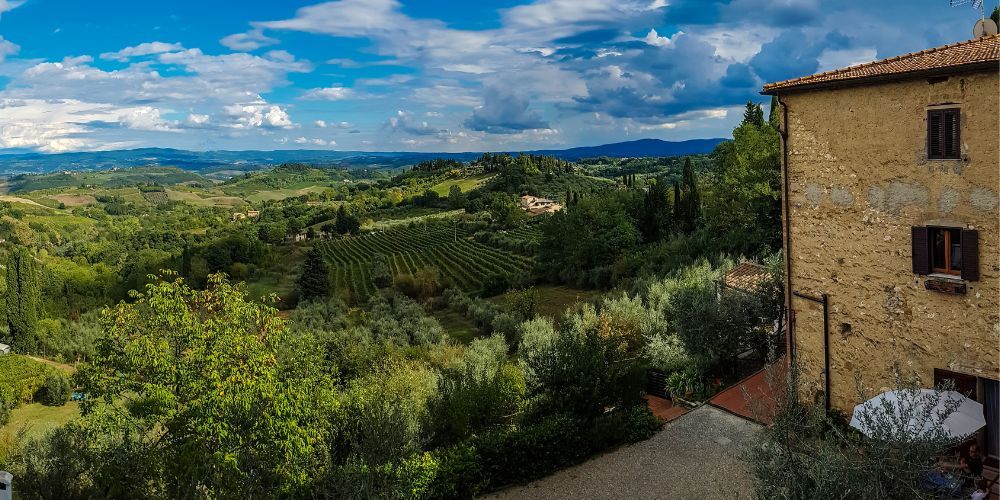
In Radda in Chianti, hospitality is something you can feel all around in the old stones, the exposed wooden beams, and the scent of freshly baked bread. Whether you're looking for a place to stay or somewhere to enjoy a good meal, you’ll find small, authentic havens where every detail reflects care, tradition, and warm-hearted welcome.
From charming guesthouses in the village center to countryside farmhouses, historic villas, and scenic relais overlooking the vineyards, the accommodation options are varied and inviting. Some offer farm-style breakfasts with homemade cakes and local produce, wellness corners tucked into ancient cellars, or panoramic terraces perfect for soaking in the quiet beauty of the hills.
Here, mealtime is a ritual best enjoyed slowly. Restaurants in and around the village serve traditional Tuscan dishes, sometimes reimagined, sometimes faithful to their roots: from ribollita to wild boar, hand-rolled pici pasta to rustic desserts, always paired with a glass of Chianti Classico. Some venues boast panoramic balconies, others are hidden in secret courtyards, rustic loggias or stone-walled cellars, ideal for an al fresco lunch or a more intimate dinner.
For those seeking a more informal and homey atmosphere, there are also family-run trattorias and pizzerias where the flavors speak the language of the land and its seasons.
No matter the choice, eating and staying in Radda means experiencing the territory with all your senses and being welcomed with genuine heart.
Why you should go before the world catches on

There are places that feel as though they hang in a delicate balance, as if their beauty were a whispered secret among hills and vineyards, still sheltered from the spotlight: Radda in Chianti is one of those places.
It doesn't have the crowds of Greve, nor the tourist buzz of Castellina, and perhaps that’s precisely what makes it so precious: the fact that it has remained true to itself. A village where you can still meet the eyes of an elderly man resting in the shade, where the wine truly tastes of earth and time, and where silence isn’t empty but full of breath.
Visiting Radda now, before it’s discovered by the masses, is a rare privilege. It’s like finding a trail still untouched, where every step leaves only a gentle, respectful trace. It’s experiencing the most authentic side of Tuscany, the one that needs no staging, because it’s already perfect just as it is.
To go now is to bring home not just a journey, but a fragment of truth.
About the author
Written on 25/07/2025


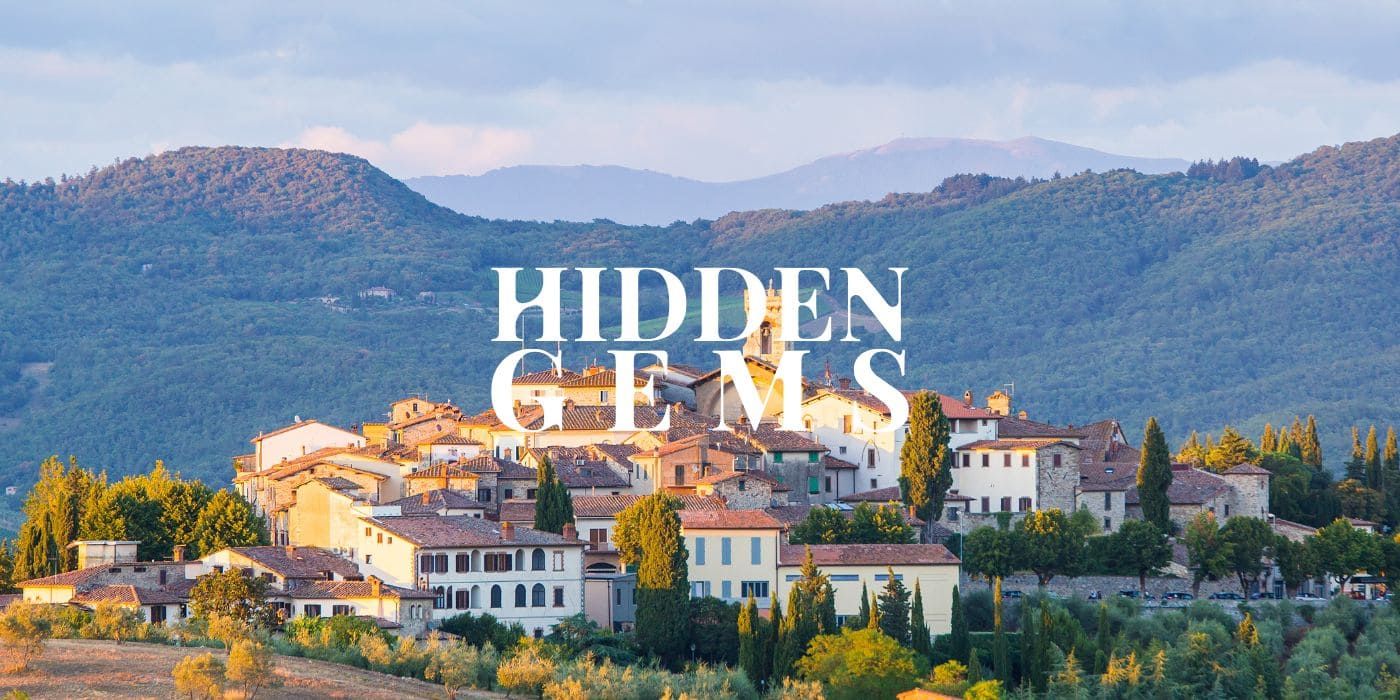

Flavia Cantini
A journey through vineyards, silence, and authentic flavors: discover Radda in Chianti before the rest of the world does.